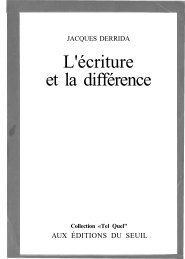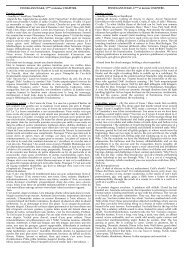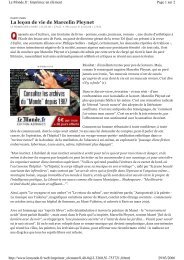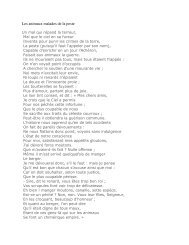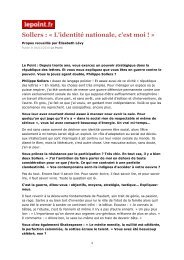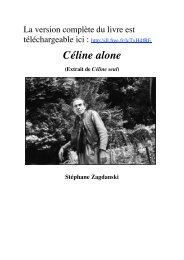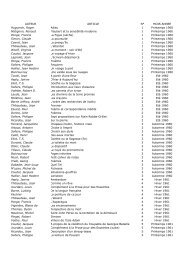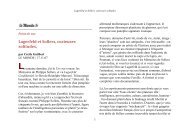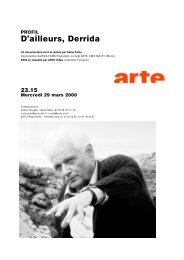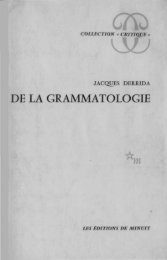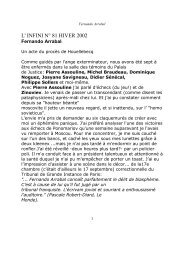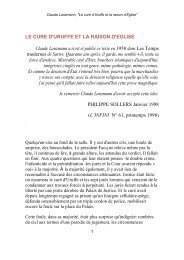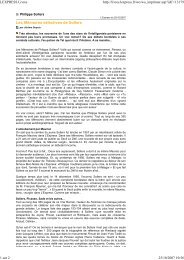The Chinese Written Character as a Medium for Poetry
The Chinese Written Character as a Medium for Poetry
The Chinese Written Character as a Medium for Poetry
Create successful ePaper yourself
Turn your PDF publications into a flip-book with our unique Google optimized e-Paper software.
. . .And into the midnight we gallopedabre<strong>as</strong>t."One superiority of verbal poetry <strong>as</strong> an art rests in its getting back to thefundamental reality of time. <strong>Chinese</strong> poetry h<strong>as</strong> the unique advantage ofcombining both elements. It speaks at once with the vividness of painting, andwith the mobility of sounds. It is, in some sense, more objective than either, moredramatic. In reading <strong>Chinese</strong> we do not seem to be juggling mental counters, butto be watching things work out their own fate.Leaving <strong>for</strong> a moment the <strong>for</strong>m of the sentence, let us look more closely at thisquality of vividness in the structure of detached <strong>Chinese</strong> words. <strong>The</strong> earlier <strong>for</strong>msof these characters were pictorial, and their hold upon the imagination is littleshaken, even in later conventional modifications. It is not so well known,perhaps, that the great number of these ideographic roots carry in them a verbalidea of action. It might be thought that a picture is naturally the picture of a thing,and that there<strong>for</strong>e the root ide<strong>as</strong> of <strong>Chinese</strong> are what grammar calls nouns.But examination shows that a large number of the primitive <strong>Chinese</strong> characters,even the so-called radicals, are shorthand pictures of actions or processes.For example, the ideograph meaning "to speak" is a mouth with two words and aflame coming out of it. <strong>The</strong> sign meaning "to grow up with difficulty" is gr<strong>as</strong>s witha twisted root. But this concrete verb quality, both in nature and in the <strong>Chinese</strong>signs, becomes far more striking and poetic when we p<strong>as</strong>s from such simple,original pictures to compounds. In this process of compounding, two thingsadded together do not produce a third thing but suggest some fundamentalrelation between them. For example, the ideograph <strong>for</strong> a "mess-mate" is a manand a fire.A true noun, an isolated thing, does not exist in nature. Things are only theterminal points, or rather the meeting points of actions, cross-sections cutthrough actions, snap-shots. Neither can a pure verb, an abstract motion, bepossible in nature. <strong>The</strong> eye sees noun and verb <strong>as</strong> one: things in motion, motionin things, and so the <strong>Chinese</strong> conception tends to represent them.<strong>The</strong> sun underlying the bursting <strong>for</strong>th of plants = spring.<strong>The</strong> sun sign tangled in the branches of the tree sign = e<strong>as</strong>t."Rice-field" plus "struggle" = male."Boat" plus "water," boat-water, a ripple.Let us return to the <strong>for</strong>m of the sentence and see what power it adds to theverbal units from which it builds. I wonder how many people have <strong>as</strong>kedthemselves why the sentence <strong>for</strong>m exists at all, why it seems so universally



